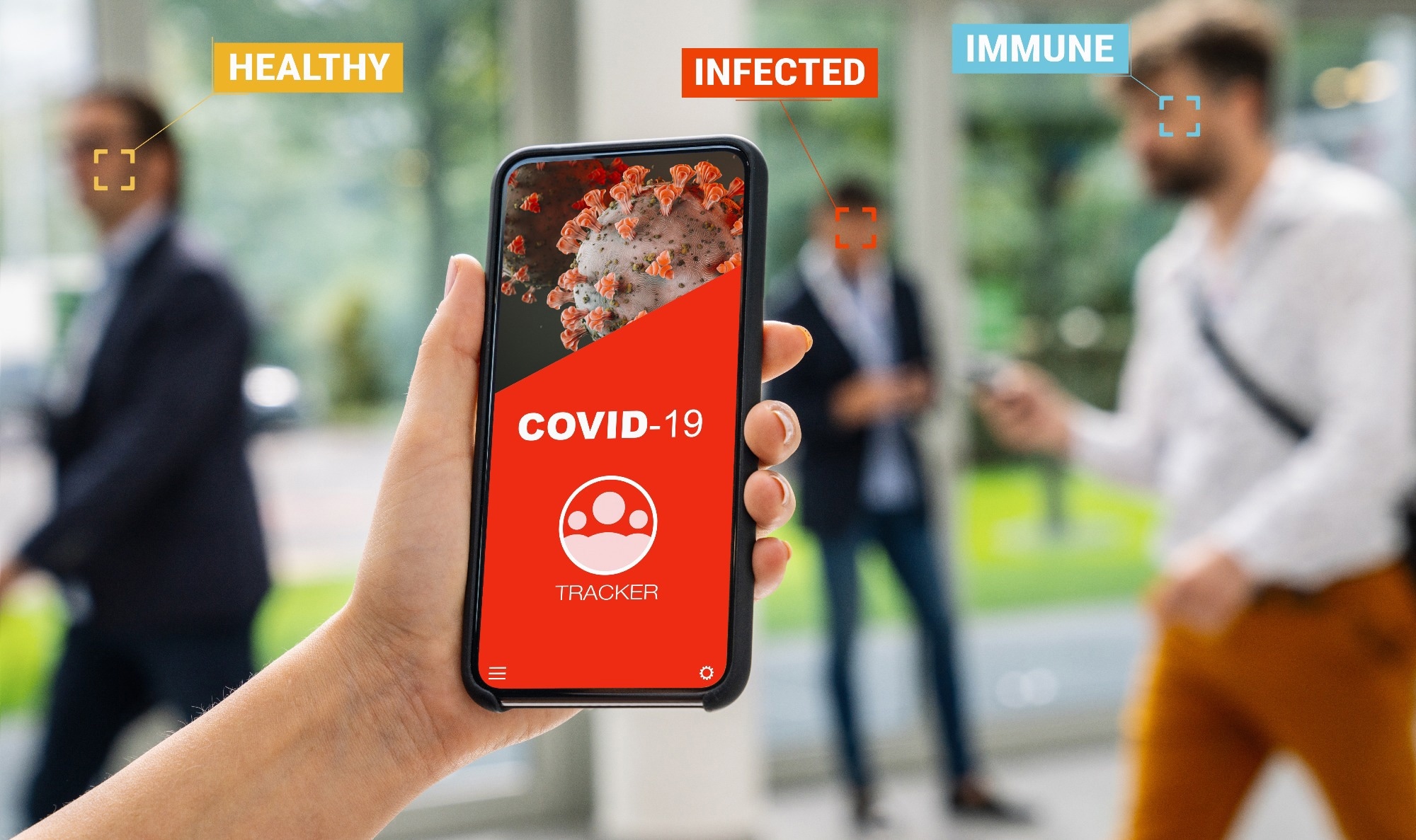The vital role of smartphone apps during the COVID-19 pandemic

At the start of the coronavirus disease 2019 (COVID-19) pandemic, analog techniques like nasopharyngeal swab specimens for polymerase chain reaction (PCR) testing were prominent. The widespread use of nonpharmaceutical interventions (NPIs) such as facemasks and social distancing was reminiscent of the influenza outbreak in 1918.
Despite the prevalence of smartphones throughout the world, scientific studies on digital technology, especially those concerning smartphone use, have been limited. As a result, the capacity of digital tools to rapidly detect and trace the transmission of the severe acute respiratory syndrome coronavirus 2 (SARS-CoV-2) and evaluate treatment response remains largely unknown.
In a recent study published in Nature Biotechnology, researchers review smartphone applications used during the COVID-19 pandemic.
 Study: Smartphone apps in the COVID-19 pandemic. Image Credit: r.classen / Shutterstock.com
Study: Smartphone apps in the COVID-19 pandemic. Image Credit: r.classen / Shutterstock.com
Smartphone application usage during COVID-19
Smartphone applications offer population-level and real-time data that can identify and localize viral illness hotspots, which may provide earlier warnings as compared to conventional clinical methods. These applications are particularly useful in rural locations to collect surveillance data and identify communities that should receive priority testing, especially in regions with poor access to healthcare facilities.
Symptom-checking apps were critical early in the pandemic, as not every infected individual underwent testing for COVID-19 due to inadequate access to health facilities or limited resources available for testing. Active screening apps, such as the COVID-19 web app by Apple and ZOE COVID Symptom Tracker, crowdsourced daily symptom information from healthy and sick participants in the United Kingdom and the United States.
Passive screening apps analyze objective-type biosensor information from wearable devices, which requires minimal individual involvement and could identify subclinical SARS-CoV-2 infections. The Digital Engagement and Tracking for Early Control and Treatment (DETECT) study used hybrid apps that relied on digital sensors to obtain data on resting heart rate (RHR) and other variables and information from questionnaires completed by participants.
The Stanford Wearables Study supported the usage of wearables to detect COVID-19, even among pre-symptomatic individuals. Syndromic reporting apps included Flu Near You in the United States, InfluenzaNet in Europe, and Reporta in Mexico.
Contact tracing apps provide a scalable alternative to manual contact tracing, as they can interact with each other and detect proximity between individuals using technologies like Bluetooth Low Energy systems.
Centralized apps like Health Code, Aarogya Setu, TraceTogether, and COVIDSafe have also been developed; however, many of these apps have not met their targets. Apps such as the Safer-Covid and Health Code provide individual-level risk evaluation to enhance adherence to NPIs, such as social distancing, mask-wearing, isolation, and increased testing.
Challenges and future recommendations
The potential of smartphone apps in public health is limited by challenges such as digital health illiteracy, structural inequities, and data privacy. Participatory apps are limited by recruitment bias, survey fatigue, and bias toward those with access to these platforms. Active-screening apps require frequent interaction, downloads, and activation and are often accompanied by severe concerns regarding hoax apps, data security, and invasive government surveillance.
Notification fatigue is another evolving challenge throughout the pandemic, as poorly working apps can alert individuals to self-isolate or create pressure not to get tested. Future work should evaluate factors impacting their uptake, continued use, and prevention of viral transmission, particularly in the context of potential data privacy breaches.
The ideal pandemic-tracking smartphone app should obtain information from multiple sources to assess an individual’s probability of infection and provide risk stratification. Moreover, the app should be accessible to an under-represented population, integrate information from any sensor, and be interpretable.
The ideal app would also provide real-time information while preserving data privacy, abide by local laws, facilitate actionable outcomes, be installed on local equipment and devices, and not require opting in. The app must also account for local pathogen, environmental, and biometric information to improve exposure.
Conclusions
Based on the review findings, smartphone applications utilized during the COVID-19 pandemic, such as outbreak-tracking, individual-risk, symptom-monitoring, and vaccination-tracking apps, served as additional public health tools. The sustained usage of applications inside the digital infrastructure reflects their importance and future as valuable instruments for rigorous analysis of current and future pandemic outcomes. However, additional studies documenting outcomes-related investigations and examining the usefulness of COVID-19 applications are needed.
- Pandit, J. A., Radin, J. M., Quer, G. et al. (2023). Smartphone apps in the COVID-19 pandemic. Nature Biotechnology 40;1013-1022. doi:10.1038/s41587-022-01350-x
Posted in: Device / Technology News | Medical Science News | Medical Research News | Disease/Infection News
Tags: Biosensor, Biotechnology, Coronavirus, Coronavirus Disease COVID-19, Fatigue, Flu, Healthcare, Heart, Heart Rate, Influenza, Nasopharyngeal, Pandemic, Pathogen, Polymerase, Polymerase Chain Reaction, Public Health, Respiratory, SARS, SARS-CoV-2, Severe Acute Respiratory, Severe Acute Respiratory Syndrome, Syndrome, Technology

Written by
Pooja Toshniwal Paharia
Dr. based clinical-radiological diagnosis and management of oral lesions and conditions and associated maxillofacial disorders.